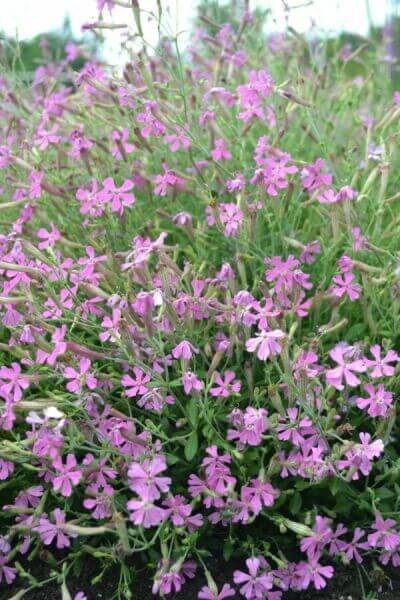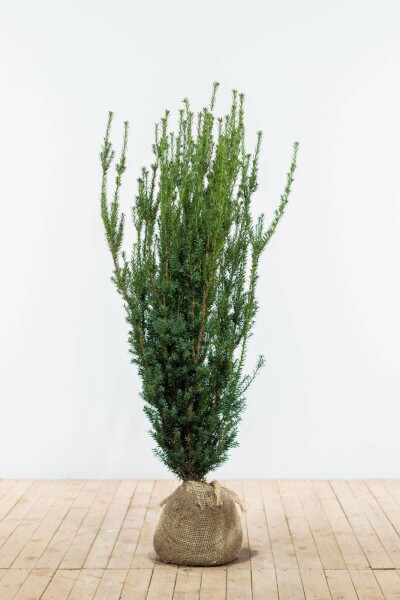Hedge Plants For Visual Barriers
Hedge Plants For Visual Barriers
Blog Article
Best Hedging Plants For Regular Pruning
Improve your garden's attraction with lavish hedge ranges such as Yew (Taxus), Thuja, Laurel, Photinia, and Bamboo, commemorated for their structural integrity and environmental advantages.
Yew and Thuja provide evergreen coverage and winter season resilience, while Laurel offers quick growth and broad, aromatic leaves.
Photinia includes seasonal charm with its dynamic red foliage, and Bamboo lends a low-maintenance, peaceful atmosphere.
These hedges enhance air quality, lower noise, and develop tranquil, private areas.
Proper planting, spacing, and upkeep ensure vigorous development and environmental consistency.
Explore how these rich ranges can elevate your garden's charm and wellness.
Secret Takeaways
Transform Your Garden With Lush Hedge Varieties
- Select Yew for its thick, evergreen development and unrivaled durability.
- Opt for Laurel for its fast development and broad leaves, making sure fast privacy.
- Select Photinia for its lively seasonal foliage, which turns a striking dark red.
- Utilize Bamboo for a low-maintenance, winter-hardy hedge with aesthetic appeal.
- Space plants 2-3 per meter and prune routinely for optimum development and health.
Popular Hedge Plants
When changing a garden with rich hedge ranges, it's vital to consider popular hedge plants such as Yew, Thuja, Laurel, and Photinia due to their unique characteristics and benefits.
Yew (Taxus) is highly esteemed for its longevity and dense, green growth, making it a prime choice for enduring landscapes.
Thuja is kept in mind for its evergreen foliage and robust winter season strength.
Photinia includes seasonal vibrancy with red leaves that darken gradually, developing dynamic visual appeal.
Laurel provides fast growth and fragrant, broad leaves, ideal for fast personal privacy.
Furthermore, Bamboo is an exceptional option for atmosphere, providing a low-maintenance, winter-hardy choice that improves the garden's aesthetic with its elegant, swaying canes.
These choices accommodate a variety of horticultural requirements and choices.
Benefits of Garden Hedges
Garden hedges offer a wide range of benefits, making them an important addition to any landscape. These natural barriers are economical to execute and provide substantial wind security, enhancing air blood circulation and contributing to noise decrease. The dense foliage of hedges like Thuja and Beech ensures personal privacy by obstructing presence, producing a remote and serene environment.
Hedges likewise play an important function in microclimate policy, providing a steady environment that fosters plant growth and minimizes temperature variations. Their complex leaf structures filter pollutants, enhancing air quality and adding to a healthier garden environment.
Furthermore, hedges master noise reduction, soaking up and deflecting acoustic waves to lower ambient noise levels. This dual performance of supplying both visual and acoustic personal privacy boosts the overall serenity and visual appeal of any garden.
Planting and Maintenance Tips
For a successful hedge, precise preparation of the planting location is vital. Ensure the soil has proper pH and drainage to support strong root development.
Area the plants properly for the picked species. Water the hedge frequently during its initial growth phase, adjusting as needed with seasonal modifications.
Implement a systematic insect control and illness avoidance method, utilizing chemical or natural treatments when essential. Frequently check for aphids, termites, and fungal infections.
Apply mulch to maintain wetness and reduce weeds. Seasonal pruning promotes thick development and air circulation, essential for plant health.
Following these guidelines will help you cultivate a vibrant, well-maintained hedge that enhances the beauty of your garden.
Spacing and Cutting Standards
Spacing and Trimming Guidelines
Correct spacing and cutting are crucial for cultivating healthy, aesthetically appealing hedges. Sufficient spacing guarantees each plant receives enough nutrients, light, and air flow.
Follow these guidelines for optimal hedge upkeep:
- Spacing: Position hedge plants 2-3 plants per meter to motivate robust growth.
- Pruning Techniques: Routine pruning is vital for preserving desired hedge height and shape. Cut new growth in summer season and cut back older wood throughout winter season.
- Seasonal Care: Adjust cutting schedules and techniques according to seasonal requirements to ensure plant health.
- Hedge Height: Frequently screen and trim to preserve the preferred hedge height and achieve consistent aesthetic appeals.
Abiding by these steps will guarantee your hedge thrives, boosting both the appeal and functionality of your garden.
Selecting the Right Hedge
Choosing the Right Hedge
Picking the suitable hedge includes evaluating factors such as fully grown height, foliage density, and environmental durability. Effective hedge plant selection requires comprehending each species' growth attributes and site-specific versatility.
For instance, Yew (Taxus) offers outstanding durability and thick growth, while Thuja is notable for its winter durability. Additionally, considering maintenance requirements is vital; fast-growing types like Laurel or Privet demand regular trimming, whereas low-maintenance choices like Bamboo or Ivy might be more suitable for those looking for very little maintenance.
Environmental factors such as soil type, light availability, and moisture conditions ought to also direct the selection procedure. This cautious approach guarantees the selected hedges will prosper, offering both visual and functional benefits to the garden landscape.
Delivery and Planting Guidance
To ensure your hedge plants thrive, they should be provided by specialized carriers and planted immediately upon arrival.
Follow these vital steps for successful planting:
- Soil Preparation: Improve the soil with raw material to enhance drain and nutrient material.
- Planting Depth: Produce a trench twice the width and equivalent to the depth of the root ball.
- Watering Techniques: Water completely after planting, keeping the soil consistently moist but not filled.
- Mulching: Use a layer of mulch to retain moisture and reduce weeds.
Client Support and Service
Offered the vital role of timely help in horticultural pursuits, our client support group is offered six days a week through telephone, e-mail, and social media to use professional guidance and promptly attend to any issues. Their devotion to fast reaction times ensures consumer complete satisfaction by solving inquiries related to plant health, optimum planting methods, and upkeep schedules.

6 days a week
This extensive support group, enhanced by an outstanding 9.3/ 10 customer ranking, highlights our commitment to enhancing the gardening experience for every single customer.
Frequently Asked Questions
How Long Does It Consider Hedge Plants to Establish?
Hedge plants usually need one to three years to end up being fully developed, with the exact duration differing by species and growing conditions.
Reliable care during this important period is important for robust development. Consistent watering, vigilant weed control, and proper fertilizer application are critical in promoting strong root advancement.
For example, fast-growing species like Laurel might establish more quickly, while slower-growing ranges such as Yew might take longer. Persistent maintenance speeds up the facility process, resulting in thick and healthy hedges.
What Are the Best Hedge Plants for Personal Privacy?
The question of the best hedge plants for personal privacy includes evaluating evergreen and deciduous options.
Evergreen hedges like Thuja, Laurel, and Cypress offer year-round protection, making sure continuous personal privacy.
On the other hand, deciduous hedges such as Beech offer seasonal privacy, shedding leaves in chillier months.
Secret upkeep pointers for personal privacy hedges consist of regular trimming, fertilizing in spring, and proper spacing-- generally 2 to 3 plants per meter.
Furthermore, consistent watering and persistent weed removal are essential for promoting healthy, dense growth.
Can Hedge Plants Attract Wildlife to My Garden?
Yes, hedge plants can attract wildlife to your garden by providing important benefits like shelter, food, and nesting sites, thereby enhancing local biodiversity. Yew, holly, and laurel are excellent for bring in birds, while ivy supports a range of bugs.
However, it is necessary to note that there are some downsides, such as increased upkeep to handle bugs and routine maintenance. Thoroughly picking and keeping hedge ranges can help stabilize these disadvantages and benefits, eventually promoting a sustainable and vibrant environment in your garden.
Are There Any Flowering Hedge Plants Available?
Yes, there are flowering hedge plants readily available that can improve the charm of your garden.
For example, Elaeagnus, likewise referred to as Olive Willow, produces aromatic white flowers in the fall, adding a touch of elegance.
Photinia, another popular option, showcases dynamic red leaves that mature into an abundant green, producing a dynamic visual impact throughout the seasons.
To ensure these plants flourish, it's important to practice correct pruning techniques and seasonal upkeep, such as cutting new development in the summer and cutting down in the winter.
These steps will assist maintain the health and visual appeal of your blooming hedges.
How Do I Prevent Insects in My Hedge Plants?
To avoid bugs in hedge plants, utilize natural pest control approaches and maintain appropriate hedge care. Present advantageous pests like ladybugs, which prey on hazardous insects, to develop a balanced community.
Frequently examine your hedges for indications of problem and quickly get rid of any afflicted parts to prevent the spread. Ensure the health of your hedges by applying balanced fertilizers and offering appropriate water.
Make use of mulching to retain soil moisture and proper spacing to decrease plant stress and promote robust development. These practices jointly assist in minimizing pest issues and maintaining a healthy hedge.
Conclusion
In essence, choosing the right hedge varieties such as Yew, Thuja, and Laurel can change any garden into a tranquil sanctuary. These plants supply year-round plant, improve visual appeal, and offer practical benefits like noise reduction and wind protection.
Proper planting strategies, precise spacing, constant watering, and seasonal trimming are important for optimal development.
Dependable delivery services and skilled client support ensure a smooth experience from purchase to planting, making it easier than ever to raise your outside space.
Garden hedges offer a plethora Additional info of advantages, making them a valuable addition to any landscape. These natural barriers are cost-effective to carry out and offer significant wind defense, improving air circulation and contributing to sound reduction. The thick foliage of hedges like Thuja and Beech guarantees personal privacy by obstructing visibility, producing a secluded and tranquil environment.

Pruning Techniques: Regular pruning is important for preserving desired hedge height and shape. Trim new development in summer season and cut back older wood throughout winter season.
Report this page